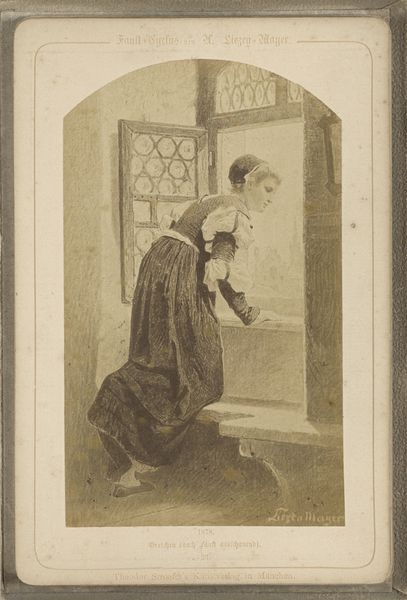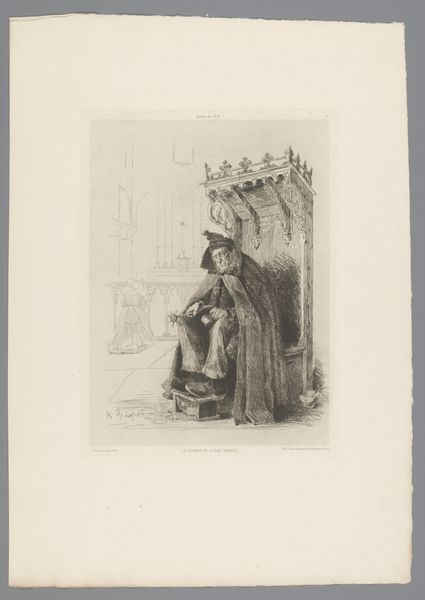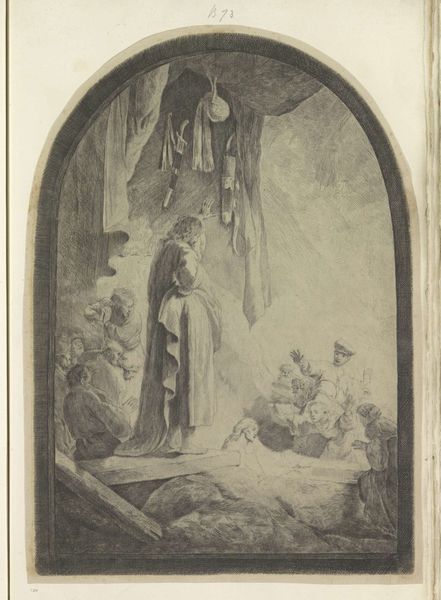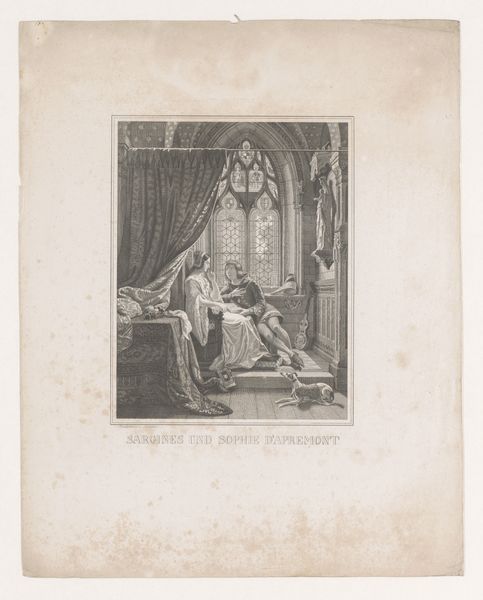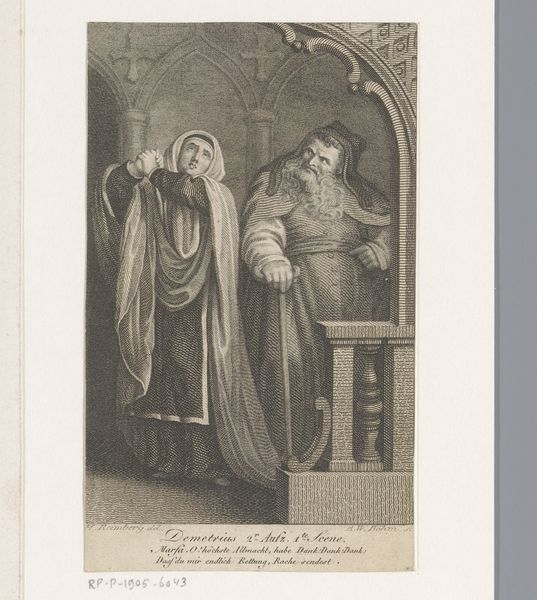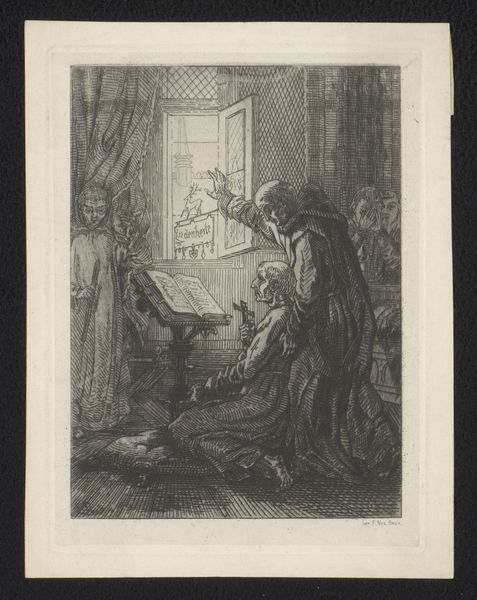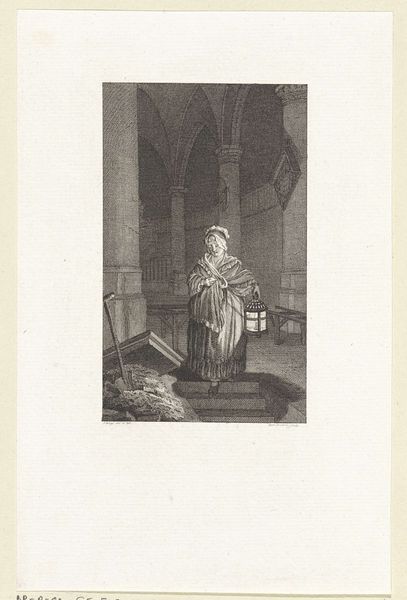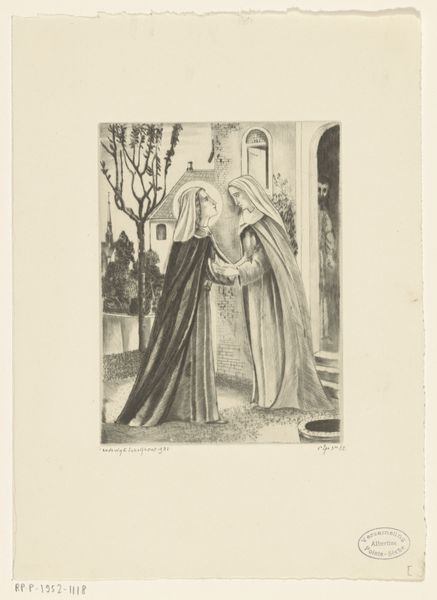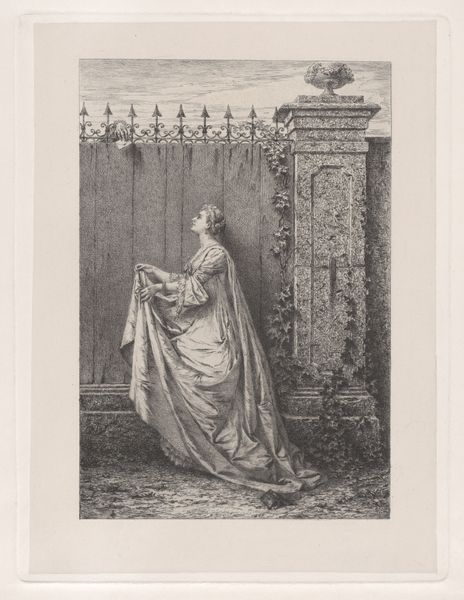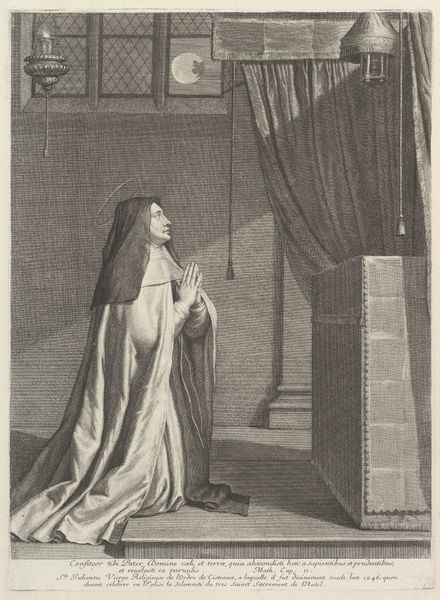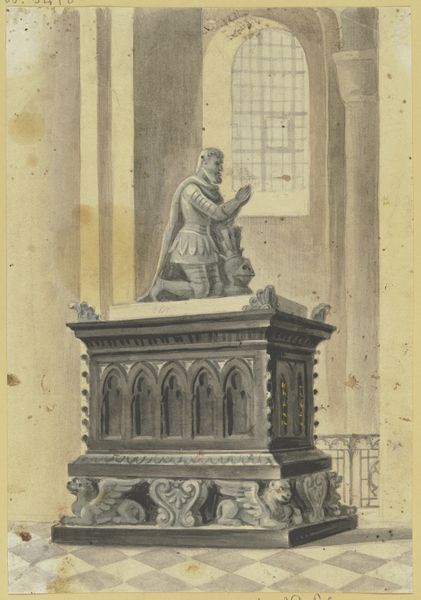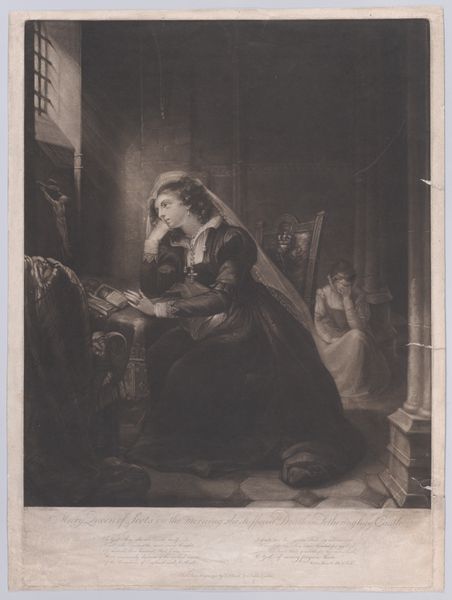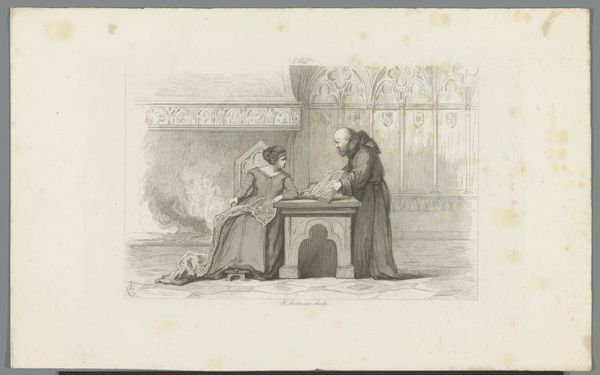
Fotoreproductie van (vermoedelijk) een tekening getiteld 'Faust op Paasochtend' 1878
0:00
0:00
Dimensions: height 144 mm, width 90 mm, height 172 mm, width 113 mm
Copyright: Rijks Museum: Open Domain
Curator: Here we have an engraving from 1878 of what is believed to be a drawing, titled "Faust on Easter Morning," attributed to A. Liezen-Mayer. The somber tonal range is achieved with incredible detail, printed by Theodor Stroofer's Kunstverlag in Munich. Editor: Ah, the old melancholic peering out the window. Even without knowing the title, there’s this air of contemplation, of someone maybe regretting decisions, watching life unfold beyond the glass. The weight of the robe, the way the figure leans... it speaks of burden. Curator: Precisely! Consider the strategic use of light. It falls upon the window, drawing the viewer's eye outwards, yet the figure remains largely in shadow. This juxtaposition emphasizes a sense of confinement versus liberation, doesn't it? And observe the structural composition – the geometry of the window contrasts starkly with the flowing fabric of the robe. Editor: Geometry versus fluidity – I like that! It's almost like the rigid structures of belief and societal expectation versus the flowing messiness of human experience. That little skull on the floor adds such a grim touch – reminds me of all those Renaissance vanitas paintings, whispers of mortality in even the most beautiful scenes. I almost wish there were birds involved somehow to better symbolize the liberation, though maybe that's on the nose. Curator: Indeed. It contributes to the emotional impact of the piece. This use of symbols in Romanticism underscores its divergence from earlier forms. Consider the romantic notion of the artist as tortured soul and the cultural mood after the rise of industry when art seemed to offer solace... The framing, the subject’s positioning... they contribute significantly to the mood. Editor: This makes me think a lot about Goethe’s Faust – about how Faust is never quite satisfied, always grasping, always reaching. Maybe Liezen-Mayer is showing us a moment of clarity, before another deal is struck and someone else is getting the short end of the stick. Curator: Your interpretation enriches our experience with the work; highlighting those nuances underscores why, still today, viewers resonate so deeply with these prints, finding connections between the lines and form of this work with questions that remain central to human experience. Editor: Well, there is always some version of Faust looking out the window – contemplating what could have been, don't you think? A little reminder that chasing all the shiny things isn't always worth the price.
Comments
No comments
Be the first to comment and join the conversation on the ultimate creative platform.
